One of the all-time greats was born 114 years ago…
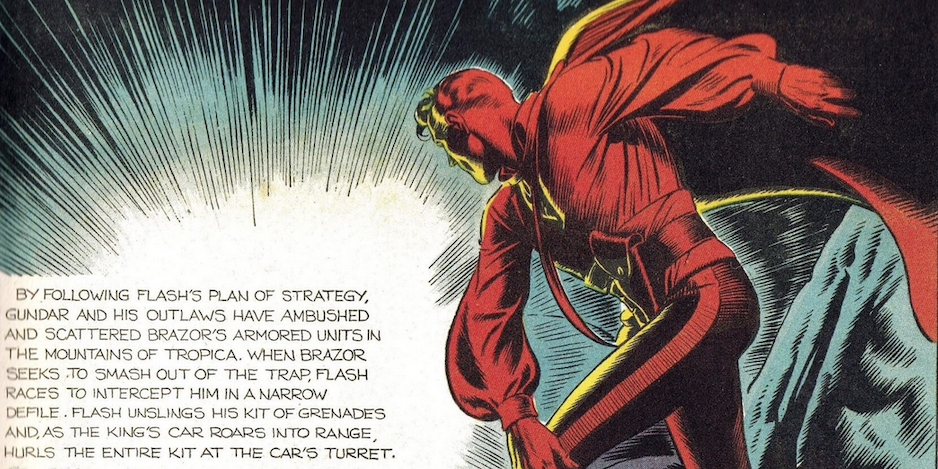
By PETER BOSCH
It’s not saying anything new to state that the three most important comic strip artists of the 1930s were Hal Foster, Milton Caniff and Alex Raymond. Each was a master of his own style of art, but probably none was more influential to those who came after him than Alex Raymond (Oct. 2, 1909 – Sept. 6, 1956). Among the very many who held him in high esteem were Murphy Anderson, Gene Colan, Jack Kirby, John Buscema, Jim Aparo, Al McWilliams, John Prentice, Syd Shores, Joe Sinnott and, of course, Al Williamson.

Raymond got his start as an artist ghosting the Blondie and Tim Tyler’s Luck newspaper comic strips and creating illustrations for magazines and other media. Below is his title lobby card of the 1935 Warner Bros. movie, Captain Blood.
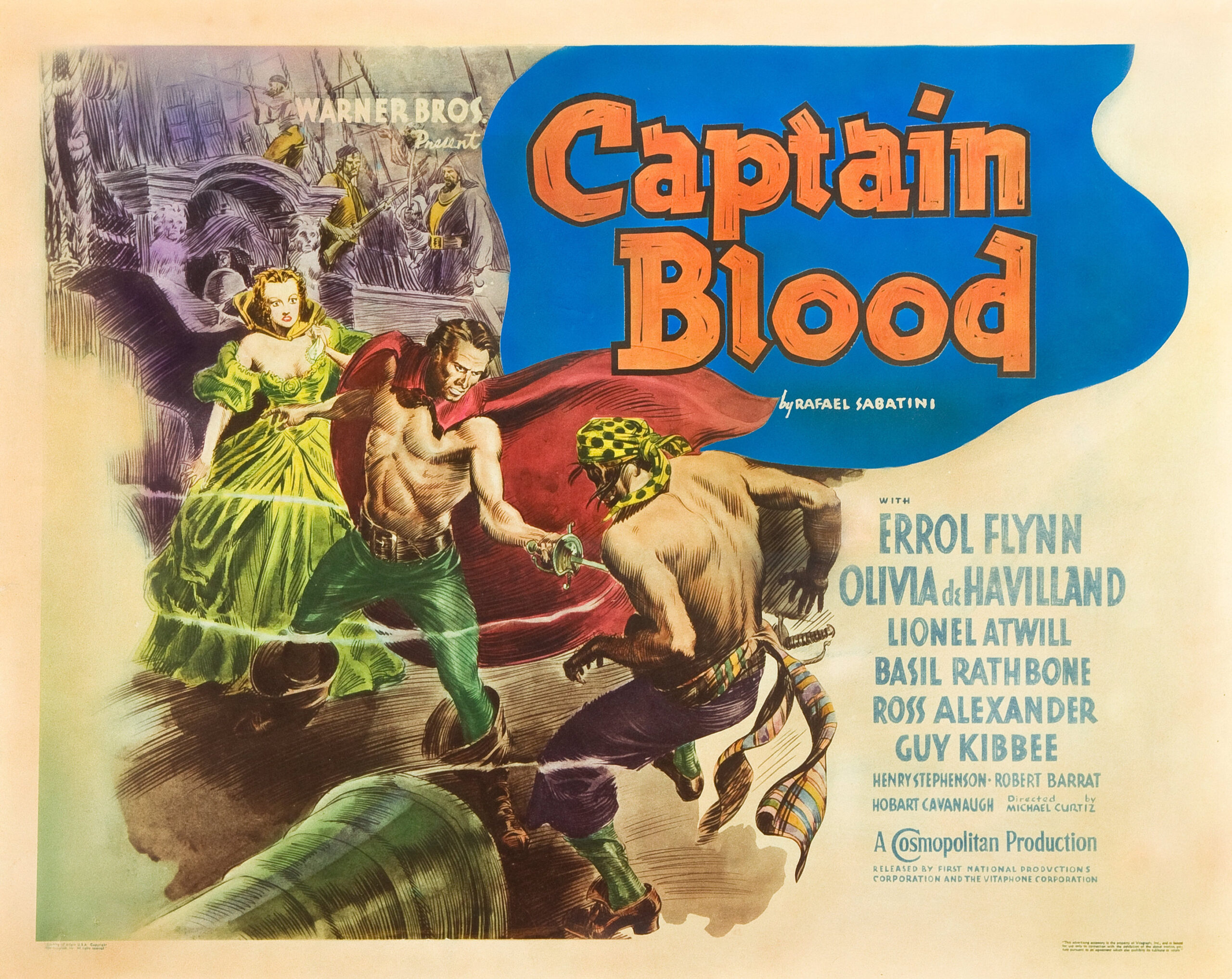
Obviously, his greatest achievement was his stunning artwork on the Flash Gordon Sunday newspaper strip from 1934 to 1944. What many may not know is that during the earliest years of Flash Gordon and Jungle Jim (the topper of the Flash Gordon page) he was also drawing the daily newspaper strip of Secret Agent X-9 (from 1934 to 1935). The trifecta of comic strips! (All three will be having their 80th anniversary in January 2024.)

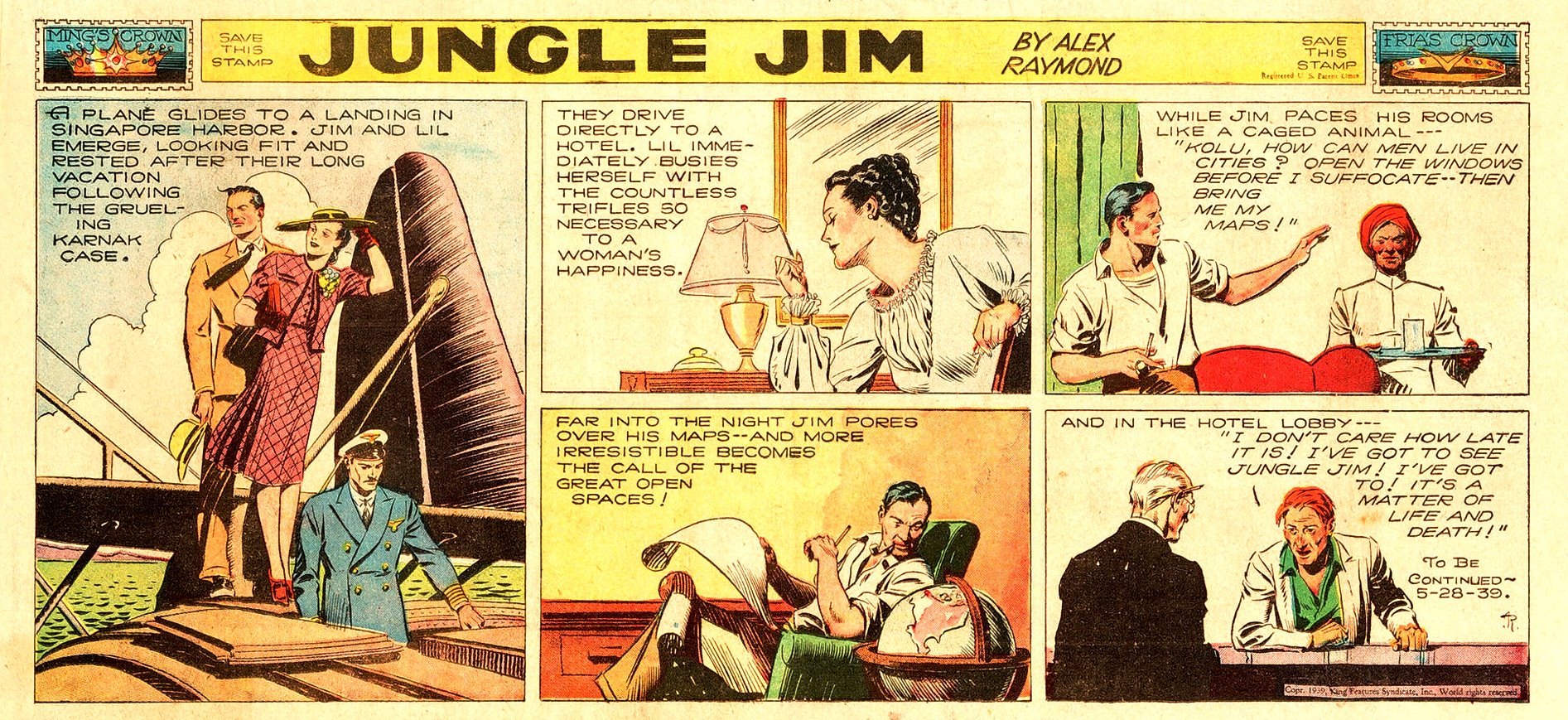
Raymond received the bulk of the public’s admiration because of his art on the different strips, but the writing was usually handled by others. Mystery author Dashiell Hammett wrote the majority of Secret Agent X-9 during Raymond’s time on the strip and Leslie Charteris (creator of Simon Templar, aka The Saint) took over after that. However, when it came to the writing of Flash Gordon, Don Moore is acknowledged to be the scribe (though he did not receive a credit on the page) for most, if not all, of the Raymond run.
Raymond drew Flash Gordon and Jungle Jim until 1944, when he gave up the strips to enlist in the Marines during World War II. When he returned to civilian life in 1946, he co-created a new daily comic strip, Rip Kirby, about a cultured gentleman returning to civilian life from the Marines. Kirby was a private detective, working from his well-to-do apartment with his butler Desmond. The writing was by Ward Greene at first and then Fred Dickenson, as well as periods by Raymond himself.

Tragically, during the height of his work on the Rip Kirby strip, Raymond was killed in a car accident on September 6, 1956.
What Alex Raymond left behind was, to use a cliché, “an embarrassment of riches.” Here are just 13 of Raymond’s incredible Flash Gordon pages in which his art graduated from the simple style of the first page in 1934 to the majesty of the Sundays just a few years later.
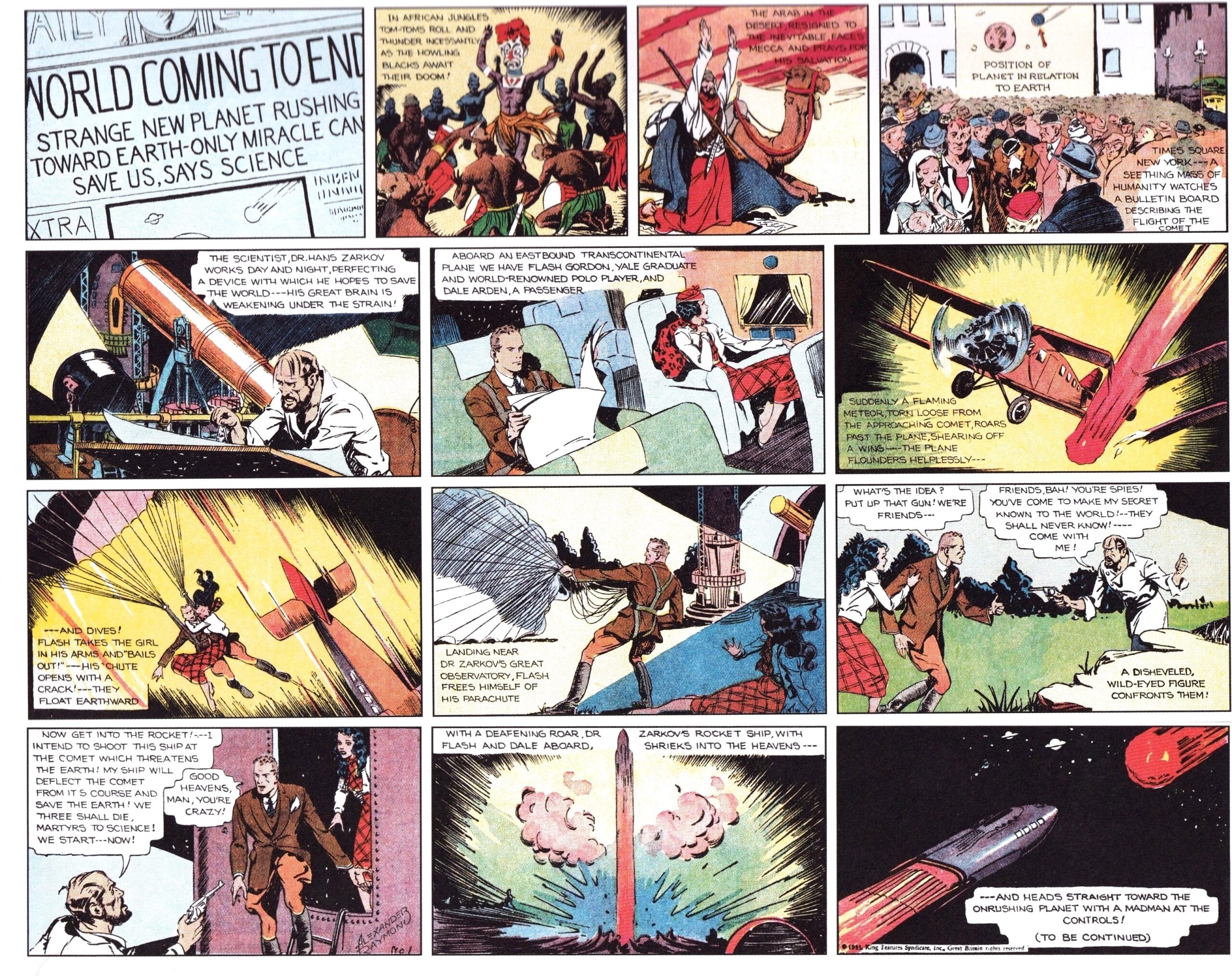
The first Flash Gordon Sunday page, January 7, 1934

May 2, 1937
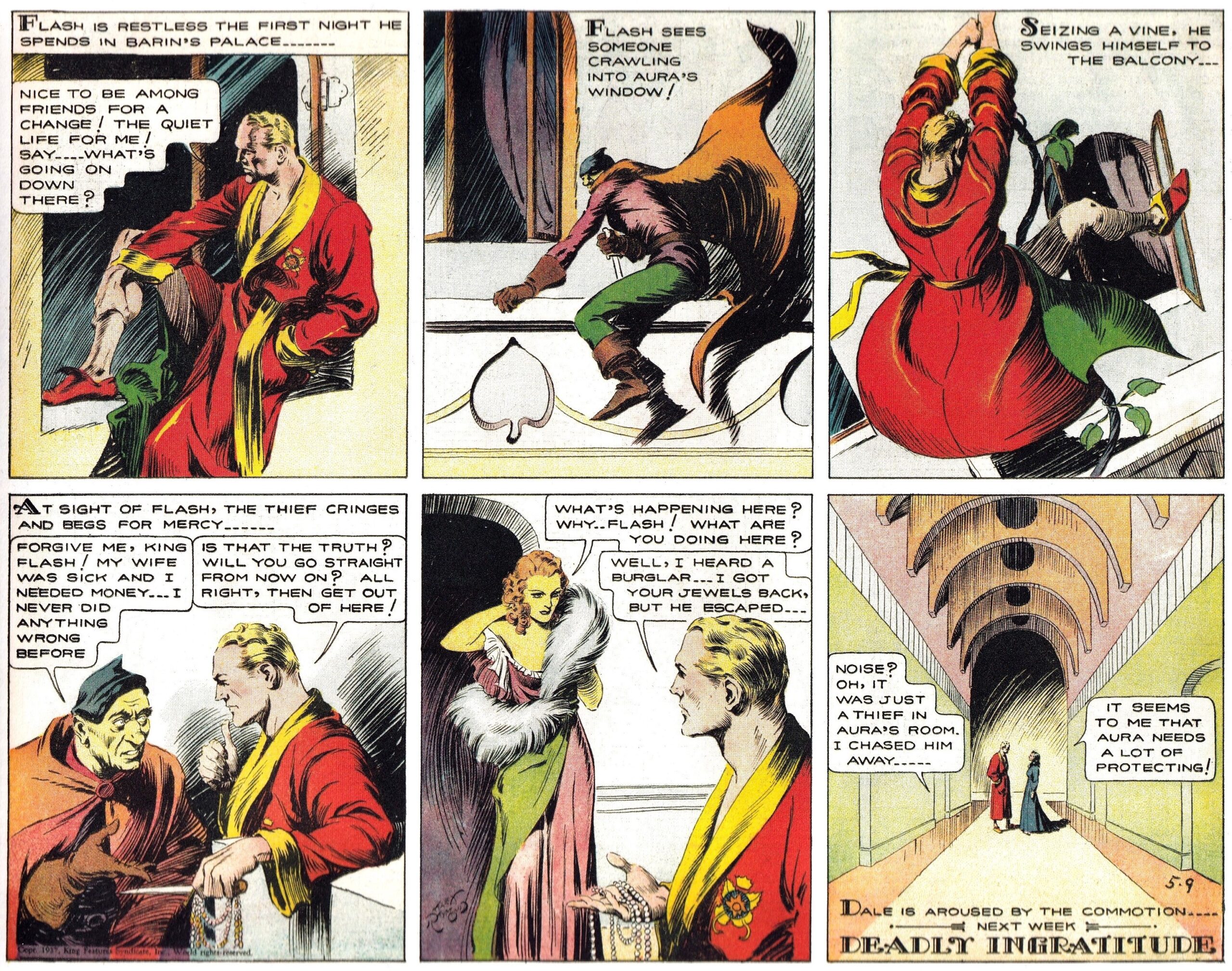
May 9, 1937
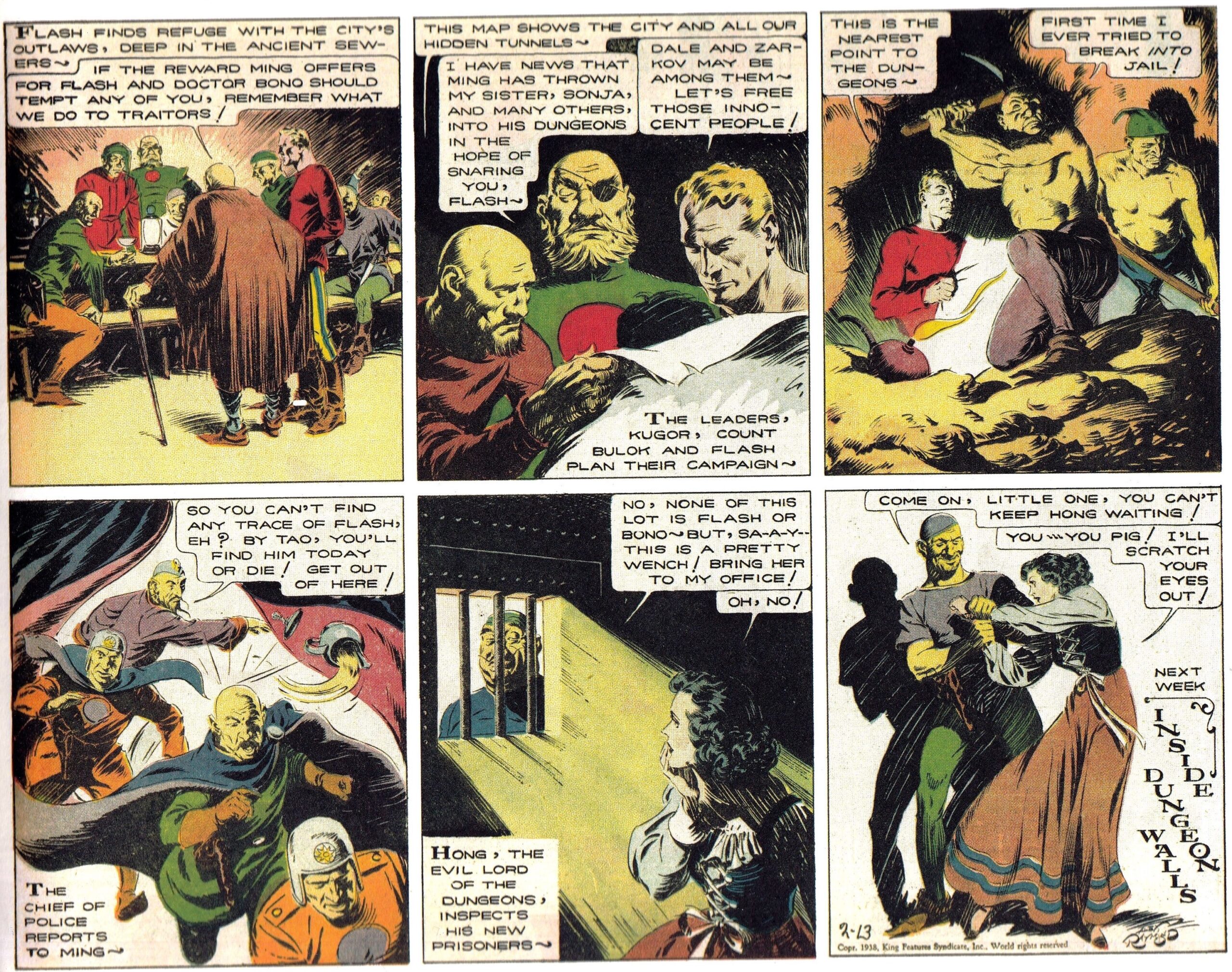
February 13, 1938

August 28, 1938
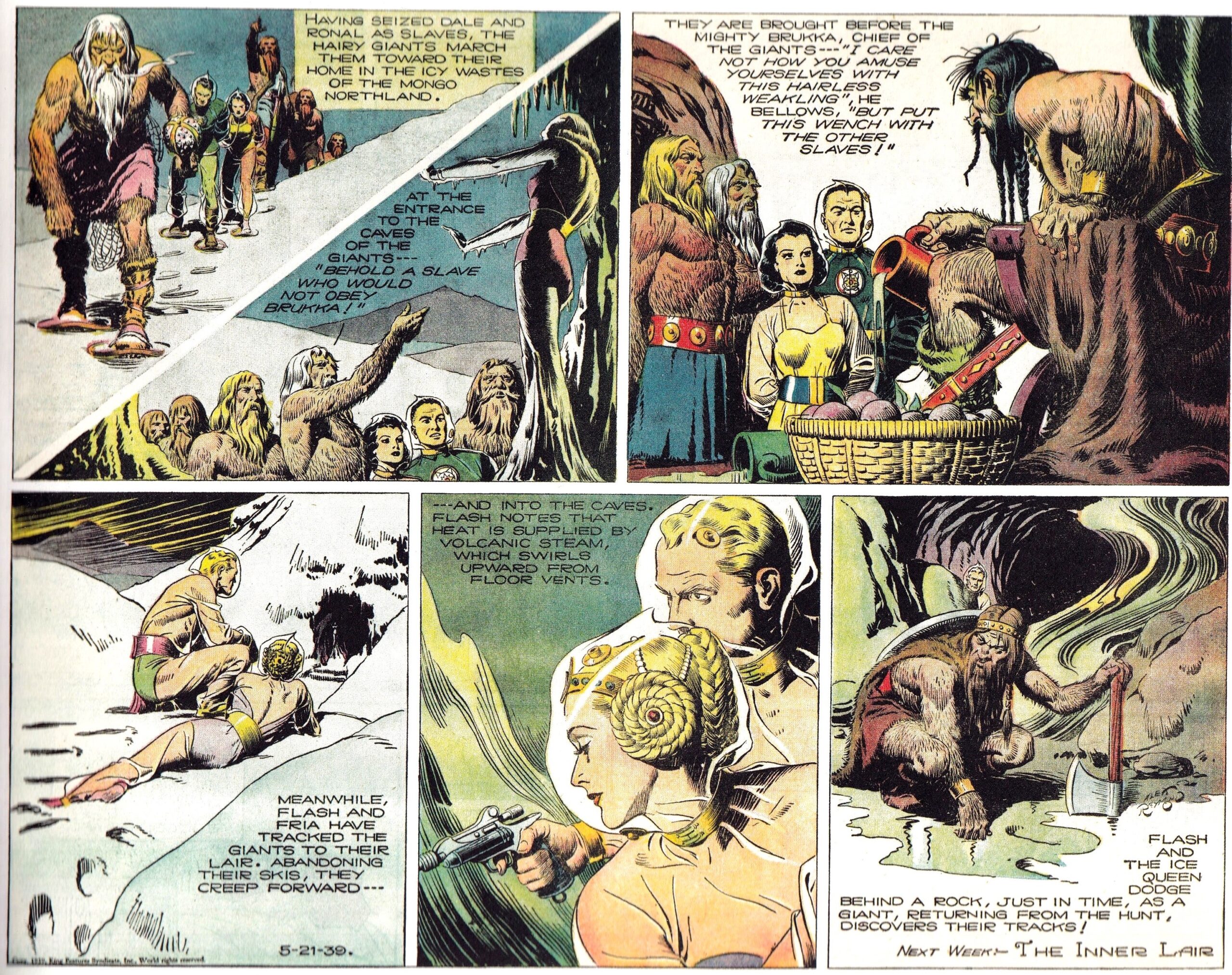
May 21, 1939
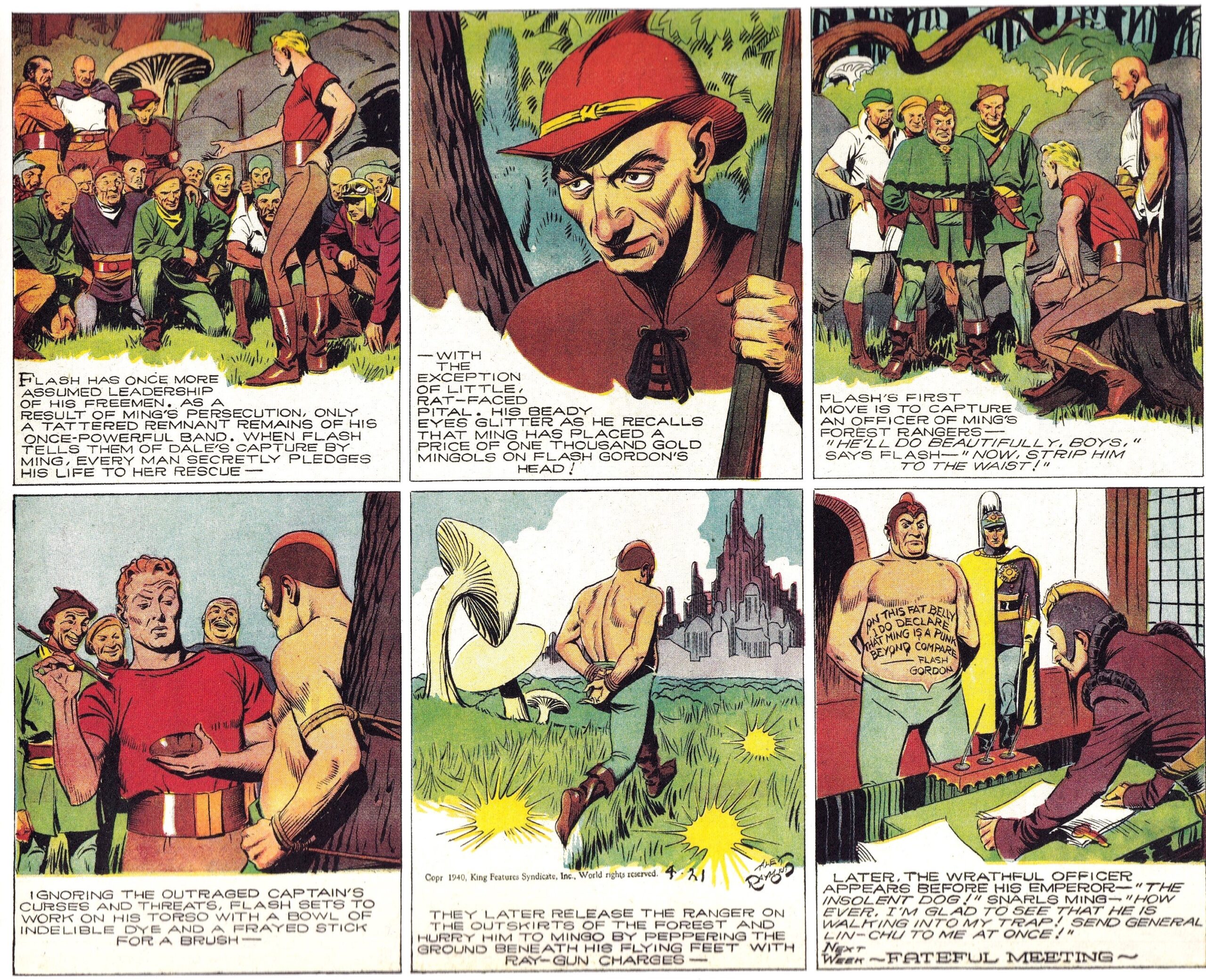
April 21, 1940
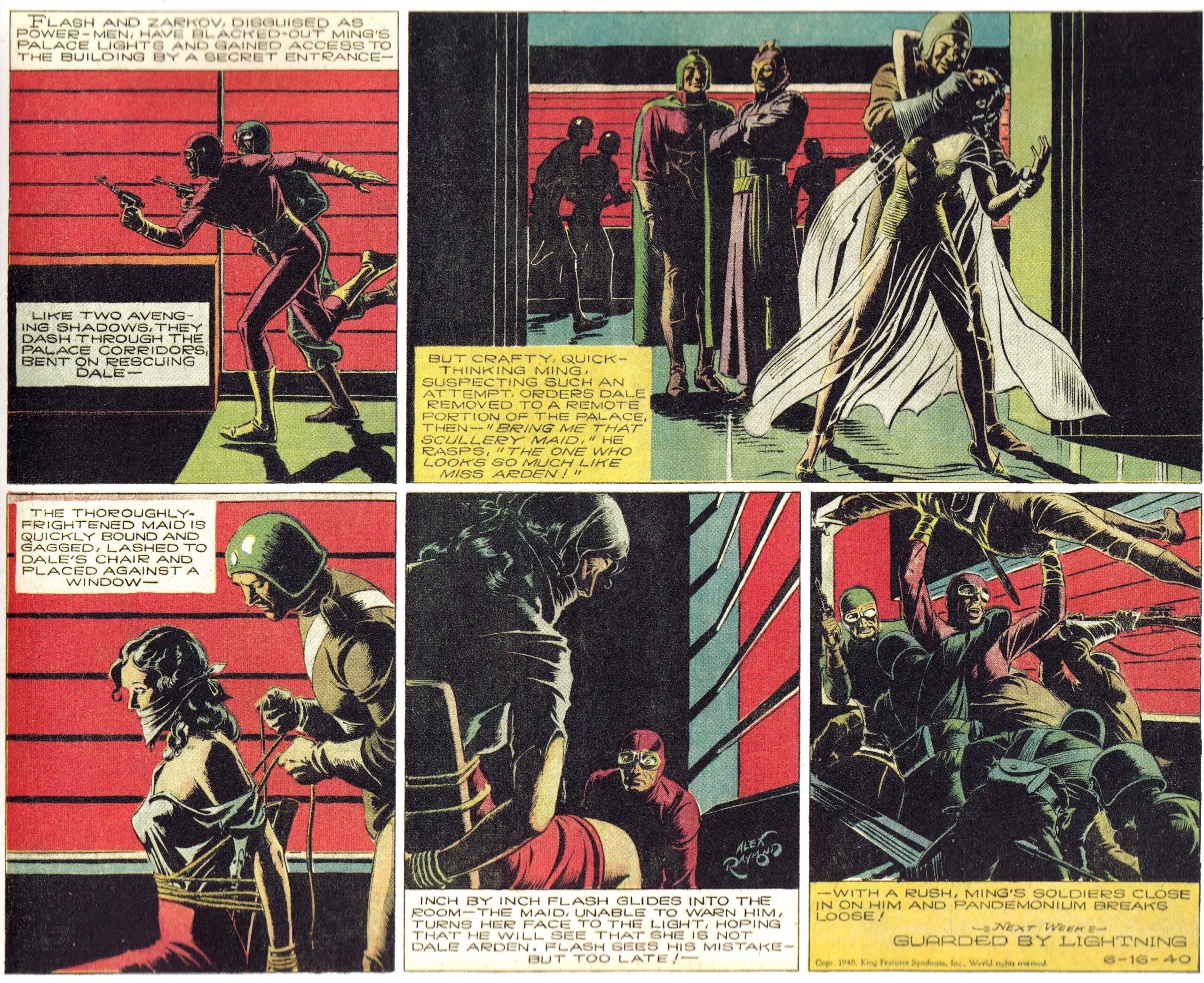
June 16, 1940
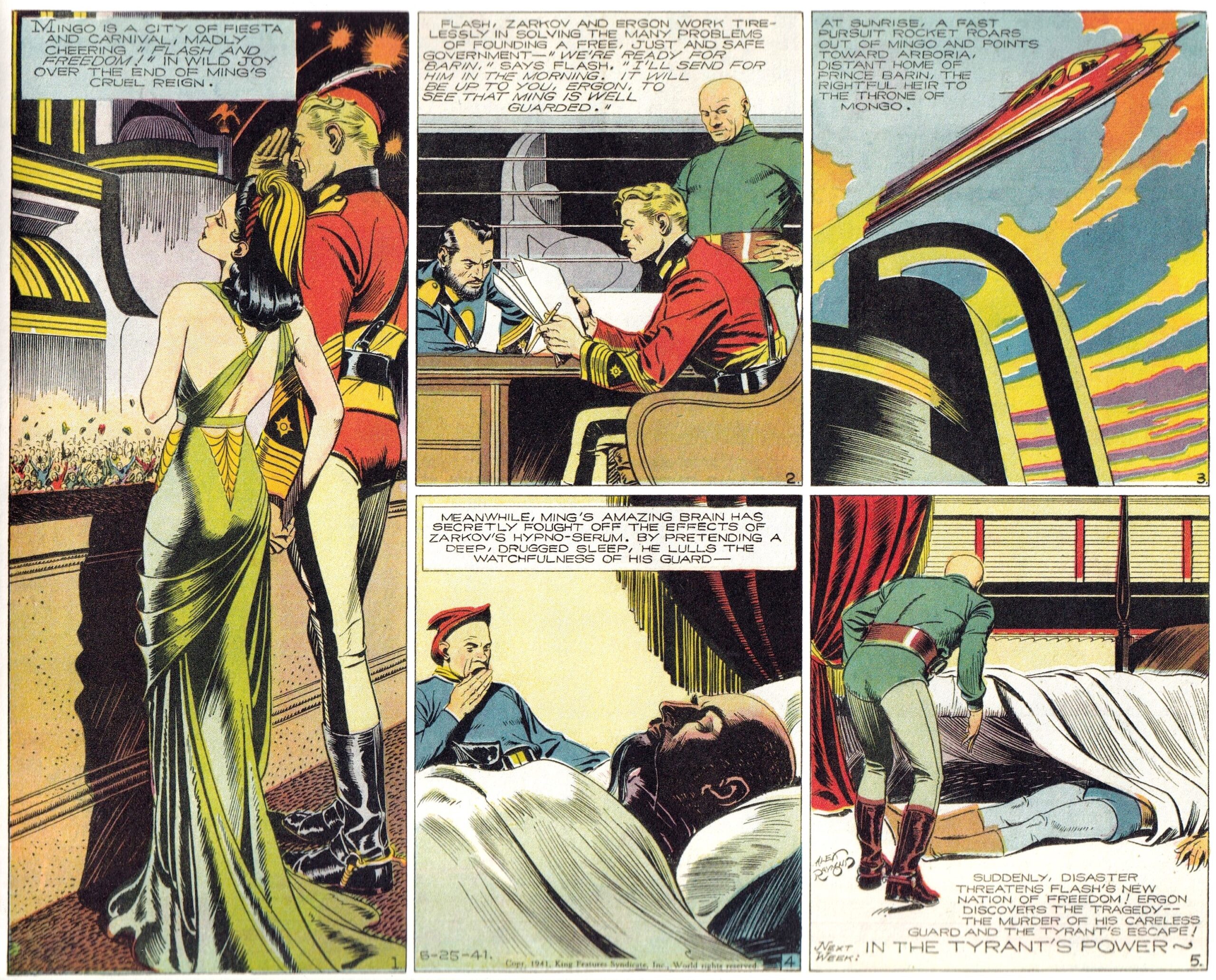
May 25, 1941

June 22, 1941
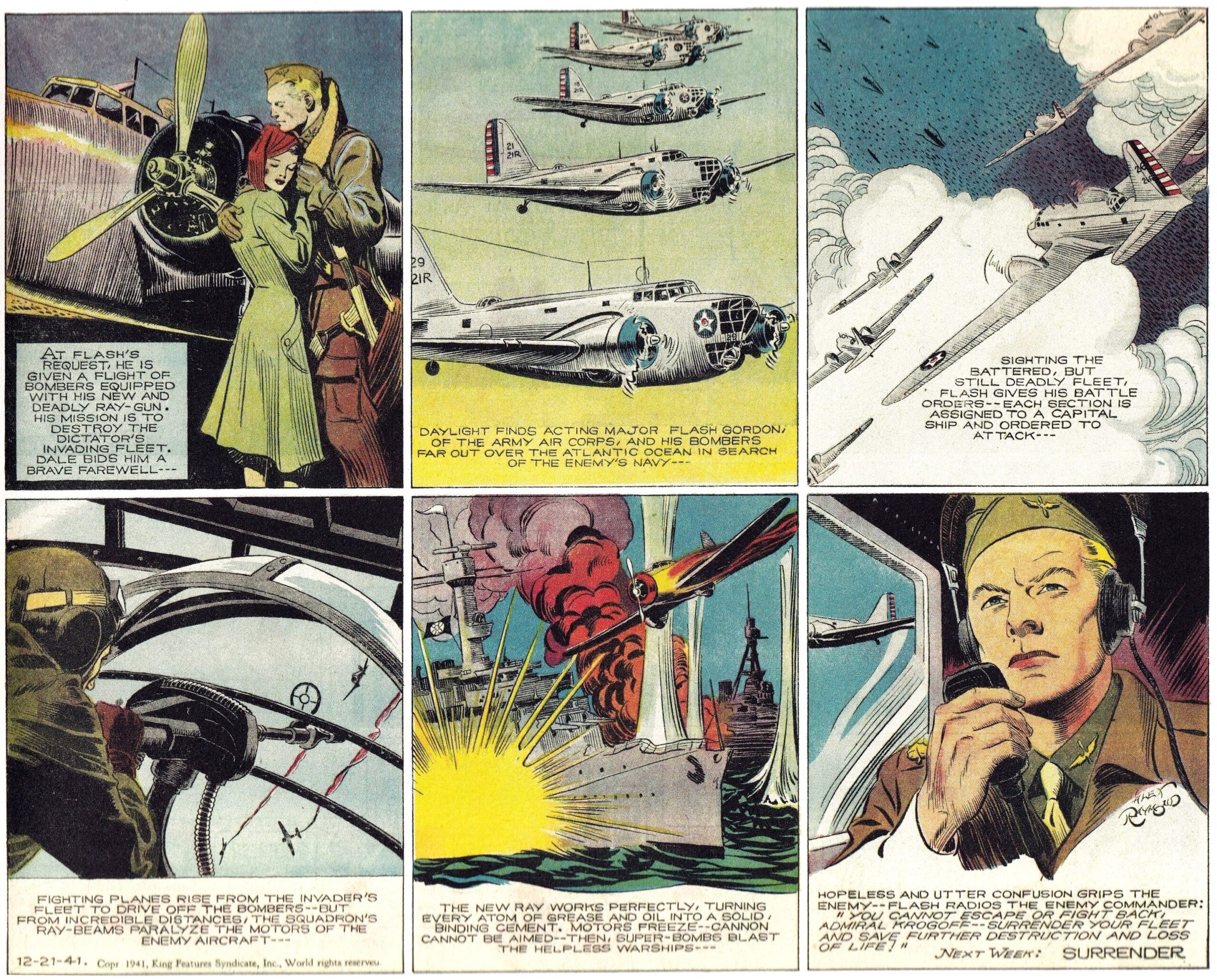
December 21, 1941 – Flash Gordon goes to war
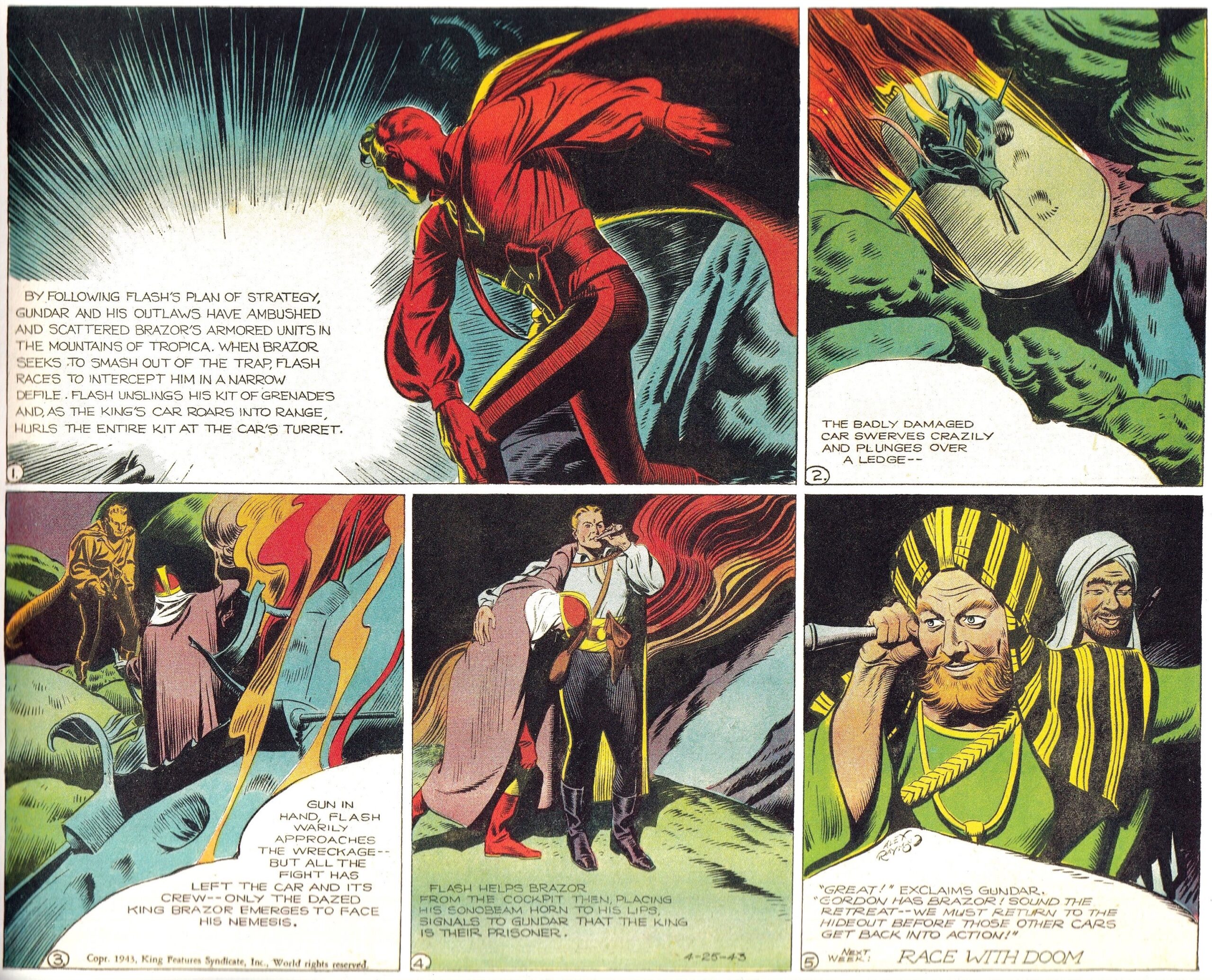
April 25, 1943
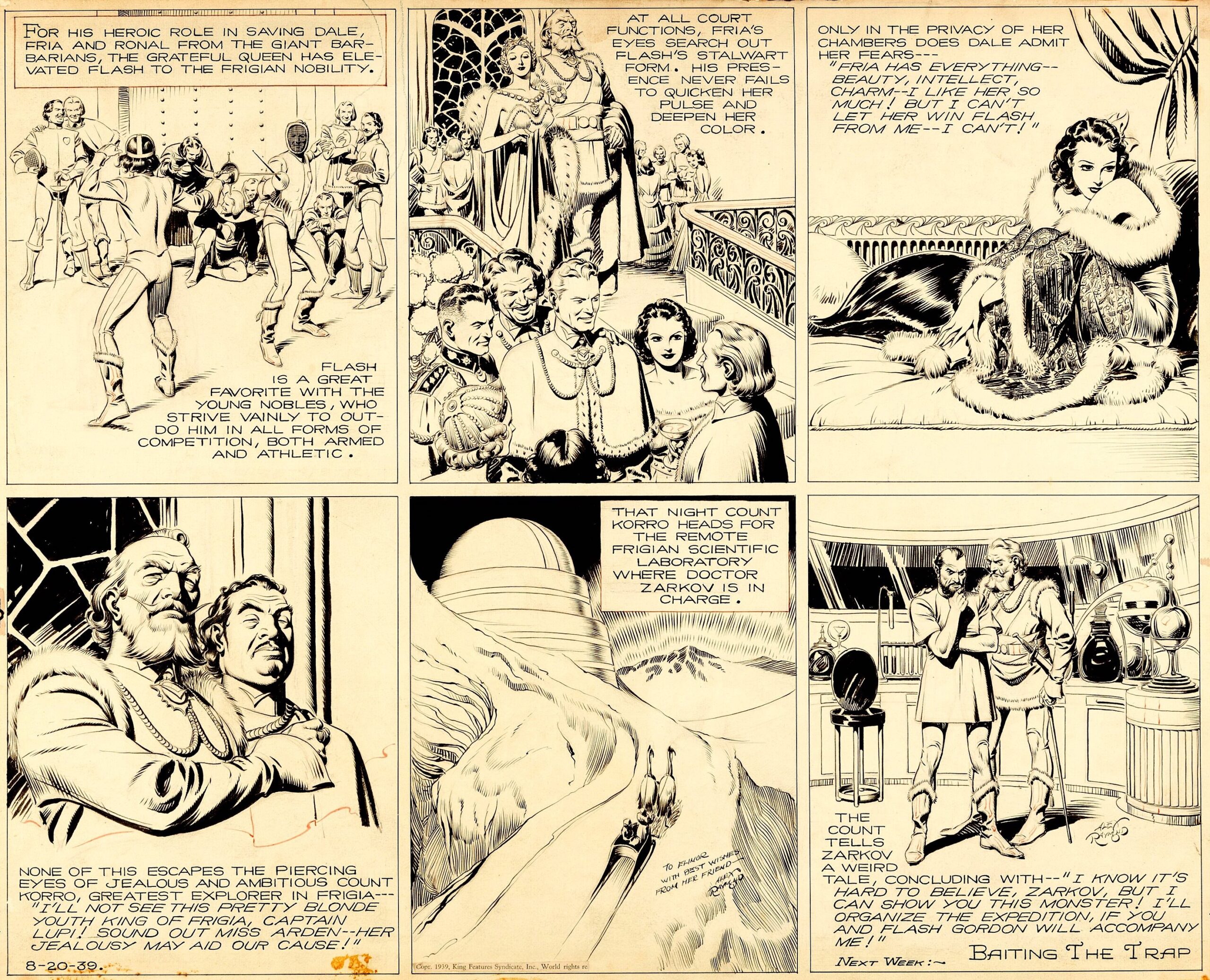
A thing of beauty is a joy forever. The original art for August 20, 1939.
—
MORE
— 13 Magnificent Illustrations: A HAL FOSTER Birthday Celebration. Click here.
— 13 Gorgeous LITTLE NEMO Strips: A WINSOR McCAY Birthday Celebration. Click here.
—
13th Dimension contributor-at-large PETER BOSCH’s first book, American TV Comic Books: 1940s-1980s – From the Small Screen to the Printed Page, was published by TwoMorrows. He is currently at work on a sequel, about movie comics. Peter has written articles and conducted celebrity interviews for various magazines and newspapers. He lives in Hollywood.
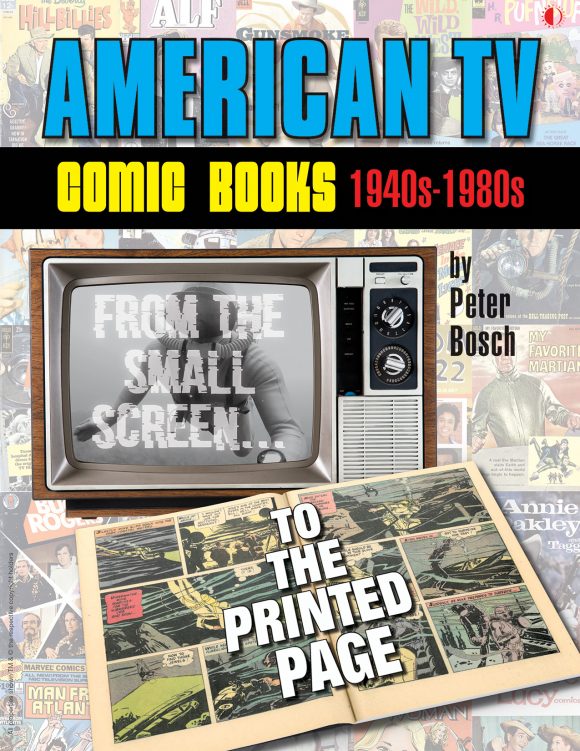

May 8, 2024
I adore Alex Raymond’s Flash Gordon for many reasons. Perhaps first among these is the fact that my father, who was born in 1930, learned how to read via the Flash Gordon comic strip. Most of my other reasons have to do with Dale Arden and my life-long weakness for brunettes. The sensuality that Raymond got away with is nothing less than stunning. Subjecting Dale to a literal strip search in a Sunday strip is jaw dropping. Adding to Dale’s discomfiture; the matrons taking utter delight in tearing her clothes off are rather mannish looking and clearly coded as gay. In 1940! In the family funny pages!? Dale was strung up and flogged by the Witch Queen. Flash was strung up and flogged as well as being chained spread eagle. If he were a younger character, it would be considered “boydage” The BDSM elements to the strip generally went unnoticed by the casual readers. Those paying attention, however? Oh Boy! In one strip a forlorn looking Dale is said to be “banqueting” with Ming the Merciless. The final panel however reveals that her hands were tied behind her back the entire time! What sort of banqueting (eating) could Dale possibly do sans hands? I mean really! The stuff Raymond got away with is remarkable. NO WAY could his original strip run in today’s Sunday papers. Garfield it is not!